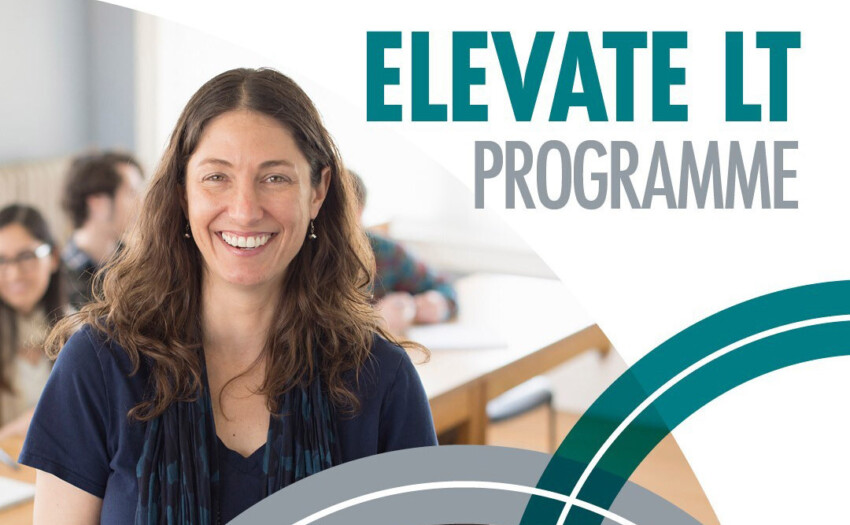
For over 15 years we led live training events in over 2,000 schools and colleges in the UK and overseas. Broadly, our training content was based on teaching techniques that evidence-based studies suggested worked best in classrooms.
During this time we recognised the limitations to the research, but were keener still to steer clear of what the profession might term ‘snake oil’. In 2008 we started to explore the idea of making our materials available online so that teachers could lead their own professional learning and choose for themselves which techniques to try in their classrooms.
Aware that budgets are tight and of the need to show a causal link between training and student learning outcomes, we took a look at a related field of research and asked the question, “What works best in terms of professional learning?” A paper of our broader findings is available for download, and below we explore five key ideas, some of which are additional to those contained within the paper.
Extracts from teacher Nicky Dolton are used to illustrate the ideas. Watch this video to learn more about her story.
1. Student Needs
Improvements in teaching need to be driven by the needs of your own students in your classroom. This, as professional learning guru Helen Timperley explains, determines the knowledge and skills teachers need to develop.
A cycle is then established where teachers try out the techniques they think will address their students needs, followed by analyzing data to see if the strategy worked in terms of improved student learning. And round the cycle continues.
Many teaching initiatives fail because they do not start from this premise. Timperley’s work stresses that even if techniques are highly ranked by researchers there is no guarantee they will work in your classroom with your students.
Children peer mark regularly but struggle to critically appraise others’ work. I wanted to improve their ability to identify strengths and weaknesses in a piece of writing and explain their response clearly in writing.
Nicky Dolton
2. Precision
The 2007 McKinsey report concluded that much teacher training, both initial and ongoing, is likely to fail if it lacks precision. Another field of research shows that a combination of static visuals and words is needed if precision is to be achieved when explaining any procedure. Ruth Clarke’s work, alongside that of David Hopkins, explains why relying on words alone to explain complex teaching procedures is likely to fail.
Put simply, words are too open to misinterpretation. This is something that assessment-for-learning expert, Dylan Wiliam, has termed lethal mutation — a teacher version of the game “telephone” where serial misunderstandings diminish the power of the original technique.
So following Ruth Clarke’s advice, we used a combination of static visuals and words to explain teaching techniques. HOW2s were born.
Because they are so clear we’ve a shared understanding from the beginning.
Nicky Dolton
3. Adaptation
The need for precision doesn’t mean that teachers unthinkingly follow templates for teaching. Every teacher is unique, as are their contexts and students.
There’s an obvious need for teachers to adapt techniques to fit their subject area and their classrooms. This is not easy. But it’s harder still if there isn’t any precision in what it is the teacher is being asked to adapt.
The bite-sized, step-by-step HOW2 visuals make them quick and easy to learn so that teachers quickly move on to the most important aspect of professional learning: adapting the technique to their context. These adaptations happen through conversations either with yourself or with colleagues.
We’ll look at [the HOW2] and say how can we make this work for our children? And what adaptations we can do… When we actually go and teach it, it’ll be quite different because we’re both very individual and we teach in our own style. But what we then do is come back with the HOW2 and review what we did.
Nicky Dolton
4. Theory of Learning
When teachers reveal and unravel their reasoning in this way, they are clarifying their theory of learning. In proposing and explaining their choice of selected technique and its possible adaptations, teachers are, in effect, giving a causal link between their actions and student learning.
The rigour of this ‘If > Then > Check’ process brings to the surface previously tacit and hidden teacher thinking. Being out in the open and subject to almost daily testing by teachers themselves, it constantly informs and improves practice.
This is especially so when process shapes the conversations with colleagues. The HOW2 provides a precise and objective focus for it.
The HOW2 gives us a focus we can go — OK that’s the idea we started with — maybe pinch ideas off each other that we can adapt further to work more effectively in our own classrooms.
Nicky Dolton
5. Professional Conversation
Charlotte Danielson strongly promotes professional conversation as an ignored yet powerful form of professional learning.
Effective professional conversations underpin all effective professional learning and are based on unambiguous causal links on a cycle that connects student needs, the selected technique, and the resulting effect on student learning.
While that may cause you to gulp at the transparency of the effectiveness of your decision-making, it also provides daily feedback that far outstrips any learning that could ever take place in a training room.
HOW2s ensure that professional conversations remain focused on the thinking and the teaching rather than on the teachers themselves.
Learn More
See how Nicky Dolton used a HOW2 in her classroom.
Download the full ‘Evidence-Informed CPD’ paper.
Pick your sector at our homepage to learn more about the HOW2s and contact us to find out how easy it is to bring HOW2s to your school or college.






